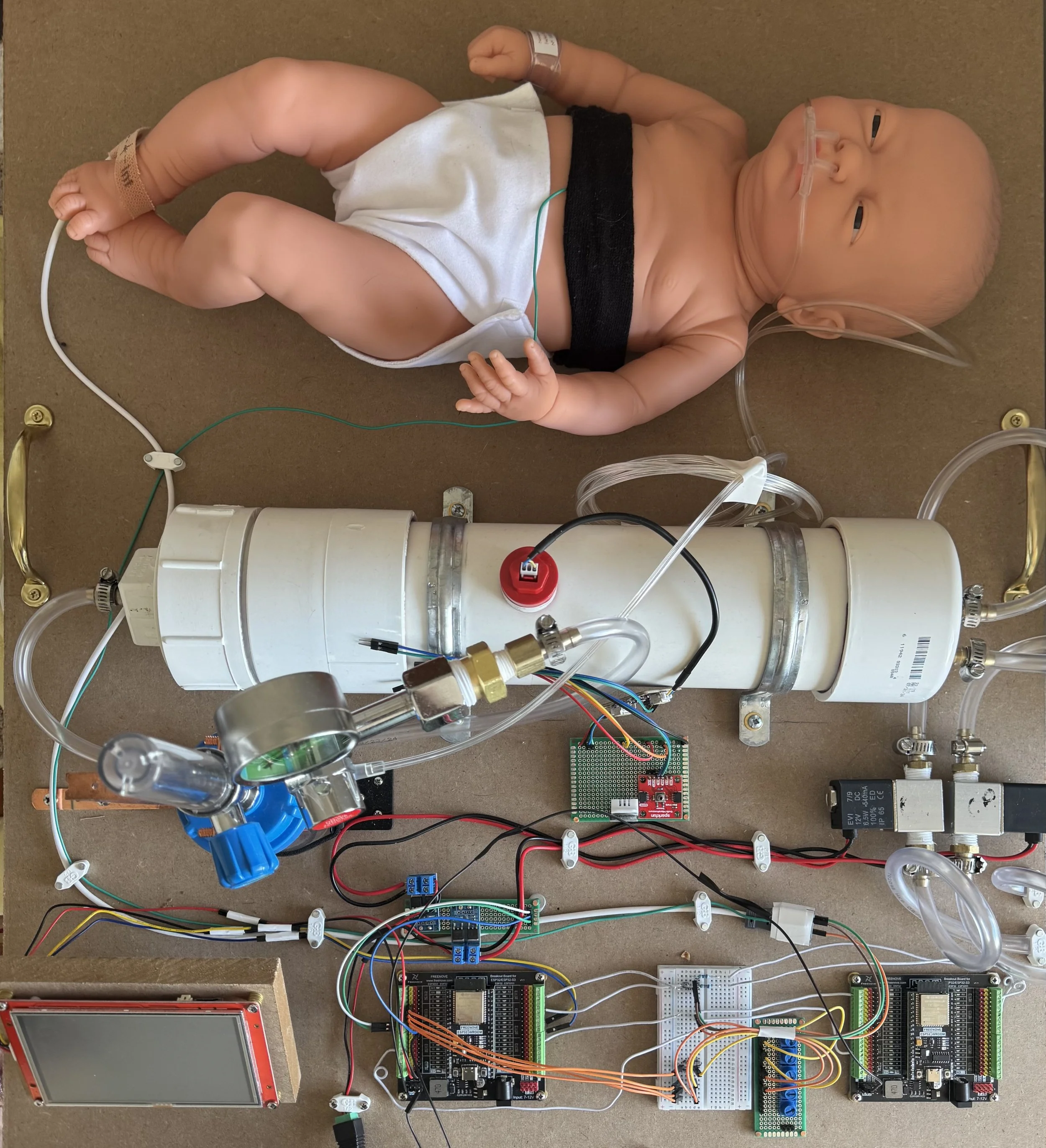Oxygen Blender
SolenAir
Novel, Machine Learning Driven Neonatal Oxygen Blender for the Prevention of Retinopathy of Prematurity
Authors: Giancarlo Paternoster, Dr. Umar K. Mian, Dr. Shantanu Rastogi, Dr. Shad Hussein, Dr. Roy Chuck
Projected Date of Completion: April 2025
This project focuses on the development of a novel oxygen blender designed to address critical gaps in neonatal respiratory care. Current oxygen delivery systems lack the precision and adaptability needed to prevent complications such as Retinopathy of Prematurity (ROP) and bronchopulmonary dysplasia. This novel oxygen blender leverages machine learning to regulate oxygen concentration (FiO2) and flow rate based on real-time physiological data from neonates. This advanced system reduces clinician workload while providing precise, adaptive oxygen therapy to meet the rapidly changing needs of critically ill infants.
The device integrates an ESP32 microcontroller with high-precision sensors and a touchscreen interface for real-time monitoring and control. A machine-learning algorithm continuously adjusts oxygen delivery using a patient-specific closed-loop model built from recorded physiological responses. By tracking, analyzing, and adapting to individual responses, the system not only improves oxygenation stability but also builds a detailed physiological profile of the patient. This innovative approach enhances the safety and efficacy of neonatal oxygen therapy, representing a significant advancement in critical care technology.
Model Overview
This system maps the relationship between fraction of inspired oxygen (FiO₂), flow rate, and SpO₂ to ensure precise oxygen delivery. At its core is a static base table, where FiO₂ values are plotted along the Y-axis and flow rates along the X-axis. Each intersection holds the patient's SpO₂ response, creating a data-driven landscape that reflects how different oxygenation settings impact saturation.
Adaptive Learning
Initially, the model relies on known physiological relationships, but over time, it refines its predictions using real-time patient data. The system identifies an optimal FiO₂-flow range that maintains SpO₂ within the clinician-specified target, adjusting dynamically to patient needs. By continuously learning and updating its internal table, this approach enhances precision, automation, and risk reduction, ensuring stable, personalized oxygen therapy.

